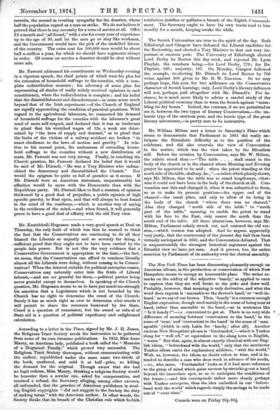Mr. William Milton sent a letter to Saturday's rues which
seems to demonstrate that Parliament in 1661 did really an- ticipate the Ritualistic difficulty as to the position of the celebrant, and did also overrule the view of Convocation in the matter, which was the view taken by the Ritualists still. Before the revision by Convocation, says Mr. W. Milton, the rubric stood thus :—" The table . . . . shall stand in the body of the church or in the chancel where Morning and Evening prayer be appointed to be said ; when the priest standing at the north side of the table, shall say, &c.,"—a rubric which plainly shows, says Mr. Milton, that the table was to stand lengthways, other- wise it could not have been in the body of the church at all. Con- vocation saw this and changed it, when it was submitted to them, so as to make its present position—the upper end of the chancel—the usual place, and only to allow of its being in the body of the church "where there was no chancel." Also they changed "north side of the table" to "north part of the table," meaning to enable the priest to stand with his face to the East, only nearer the north than the south end of the table. All these alterations, however, says Mr. Milton, Parliament calmly struck out, and restored the old ver- sion,—which version was adopted. And he argues, apparently very justly, that the controversy of the present day had thus been virtually anticipated in 1661, and the Convocation defeated. That is unquestionably the strongest historical argument against the Ritualist view we have yet seen. And it proves, too, the entire assertion by Parliament of its authority over the clerical assembly.


































 Previous page
Previous page